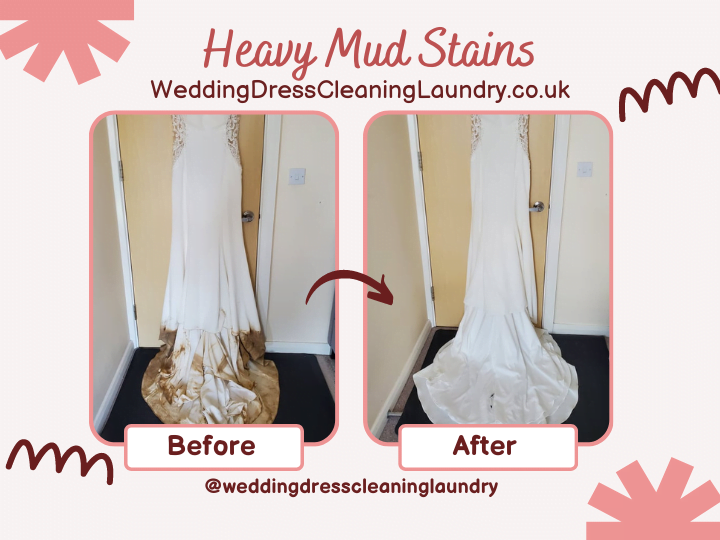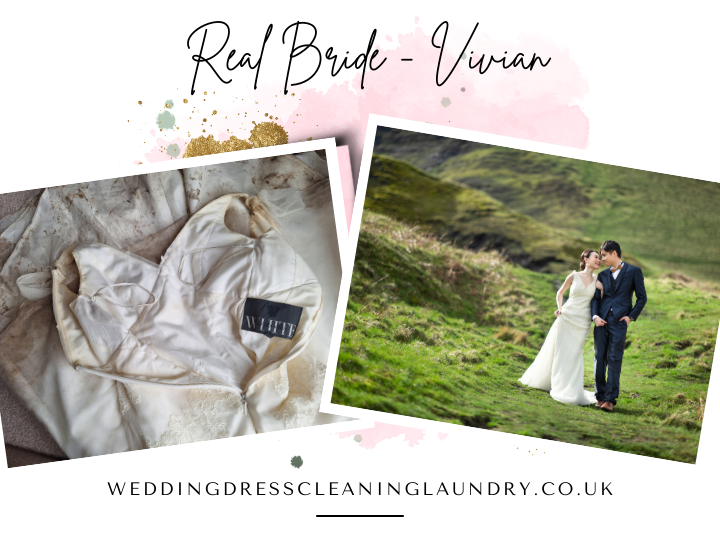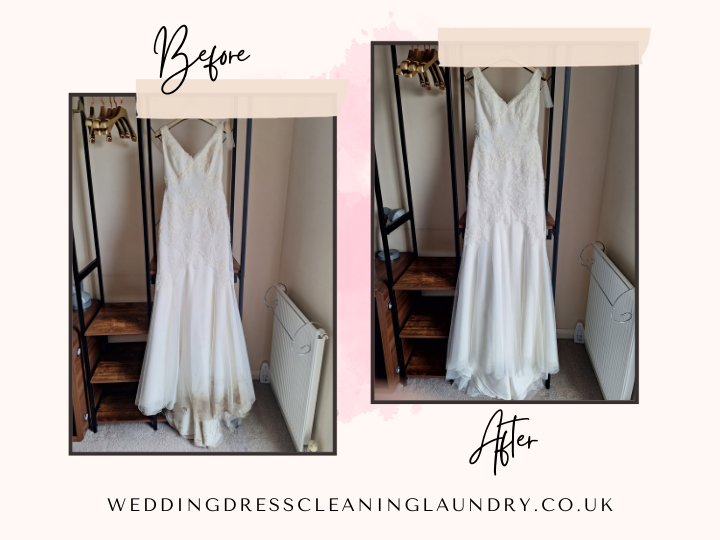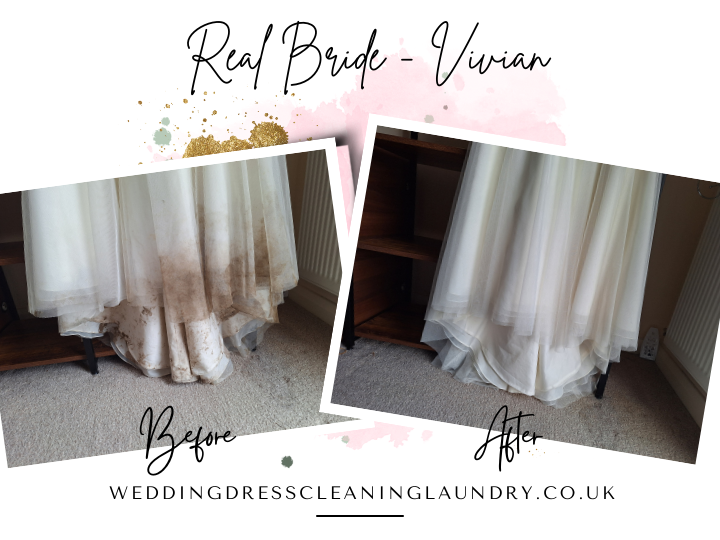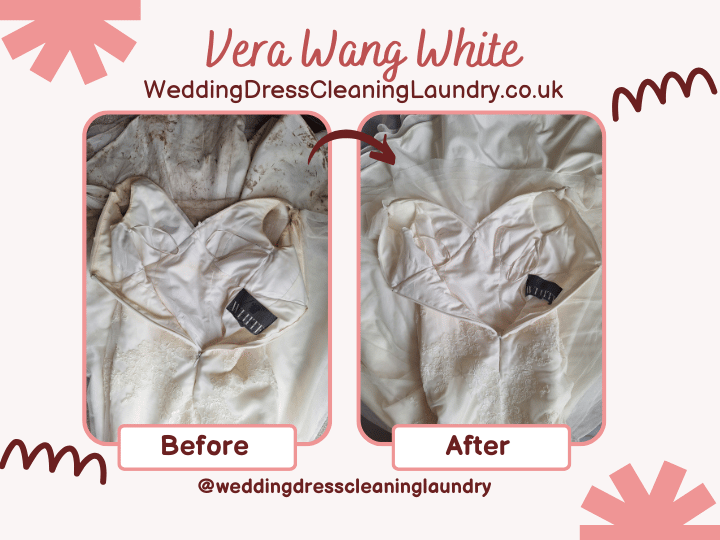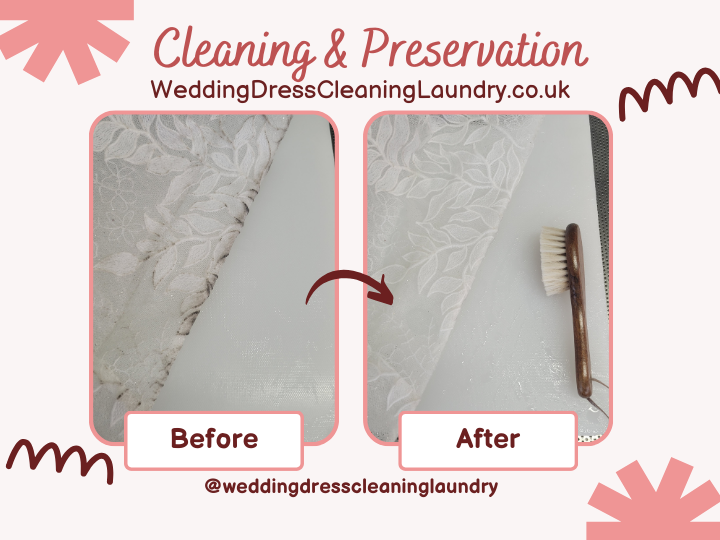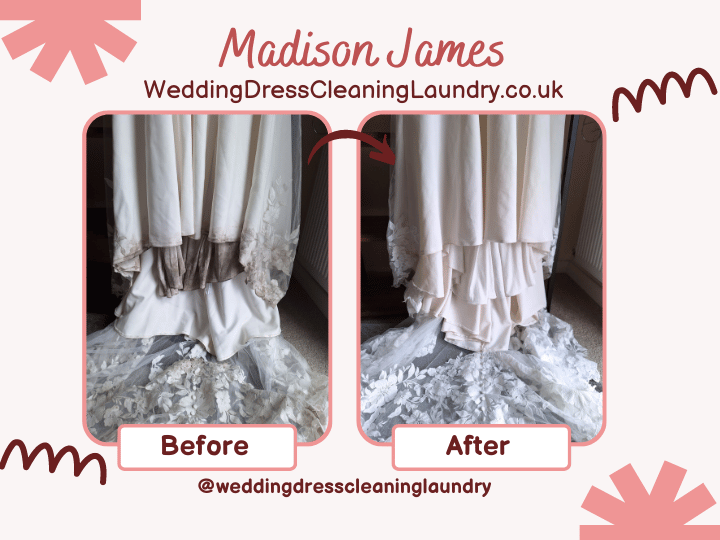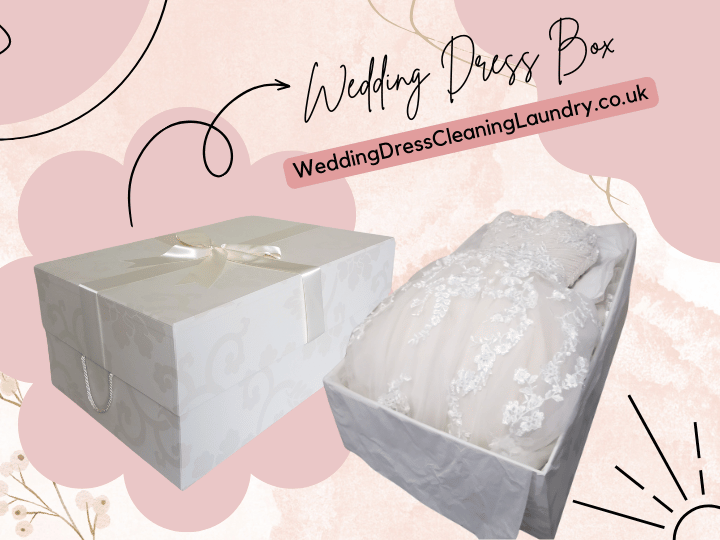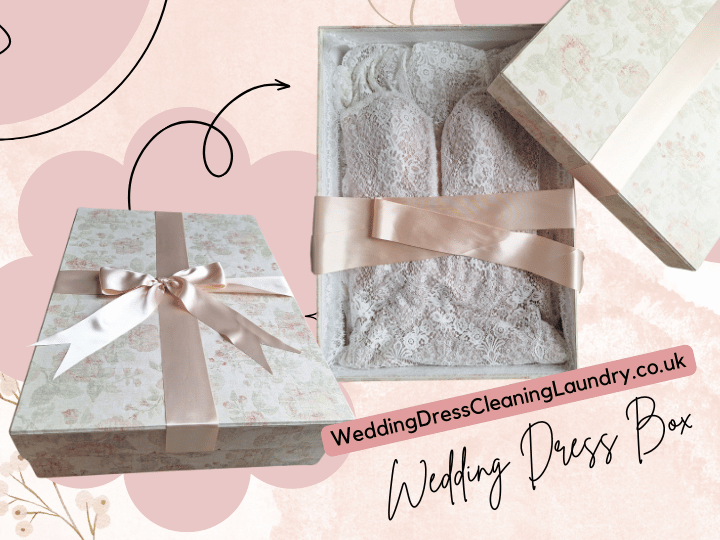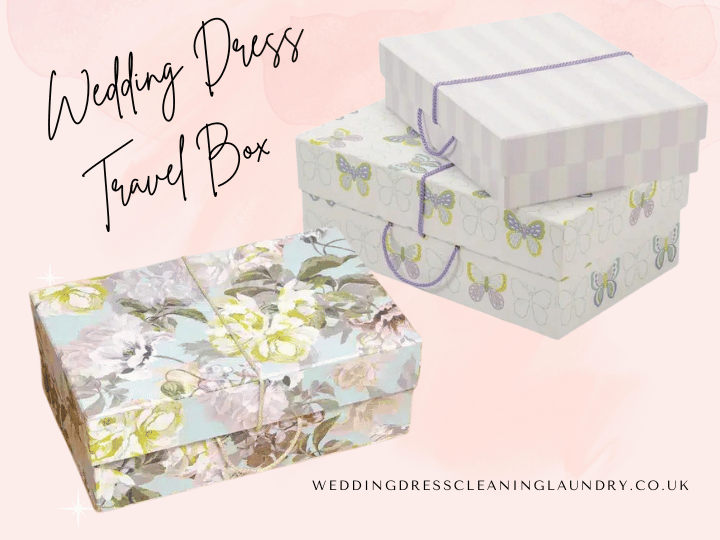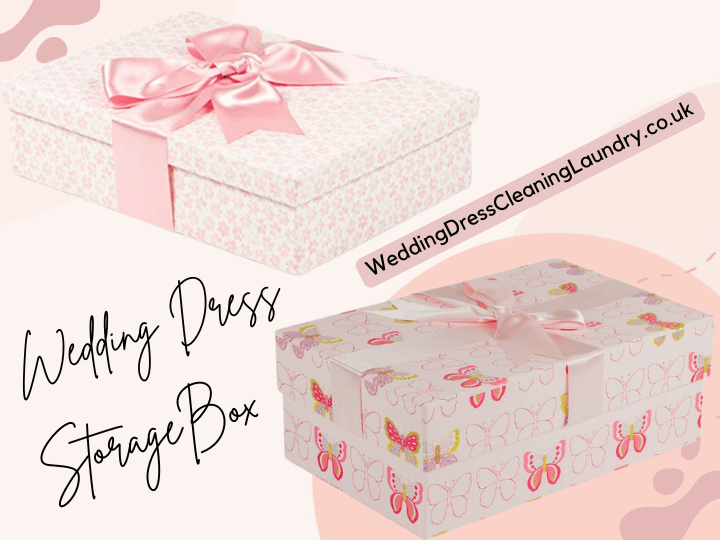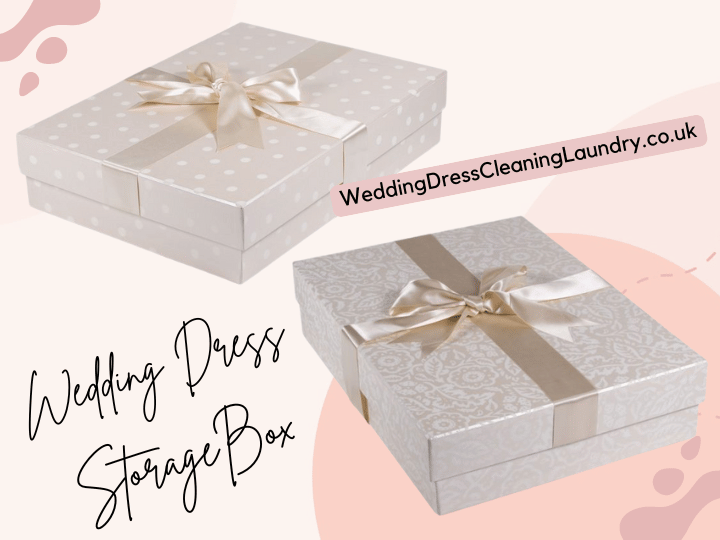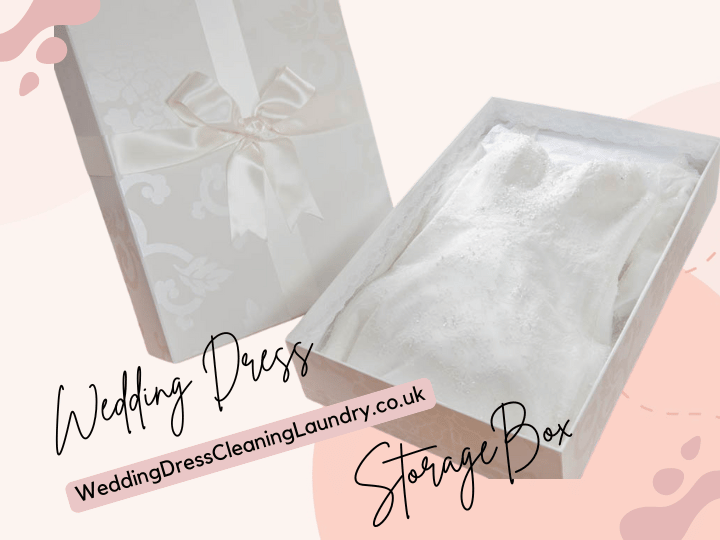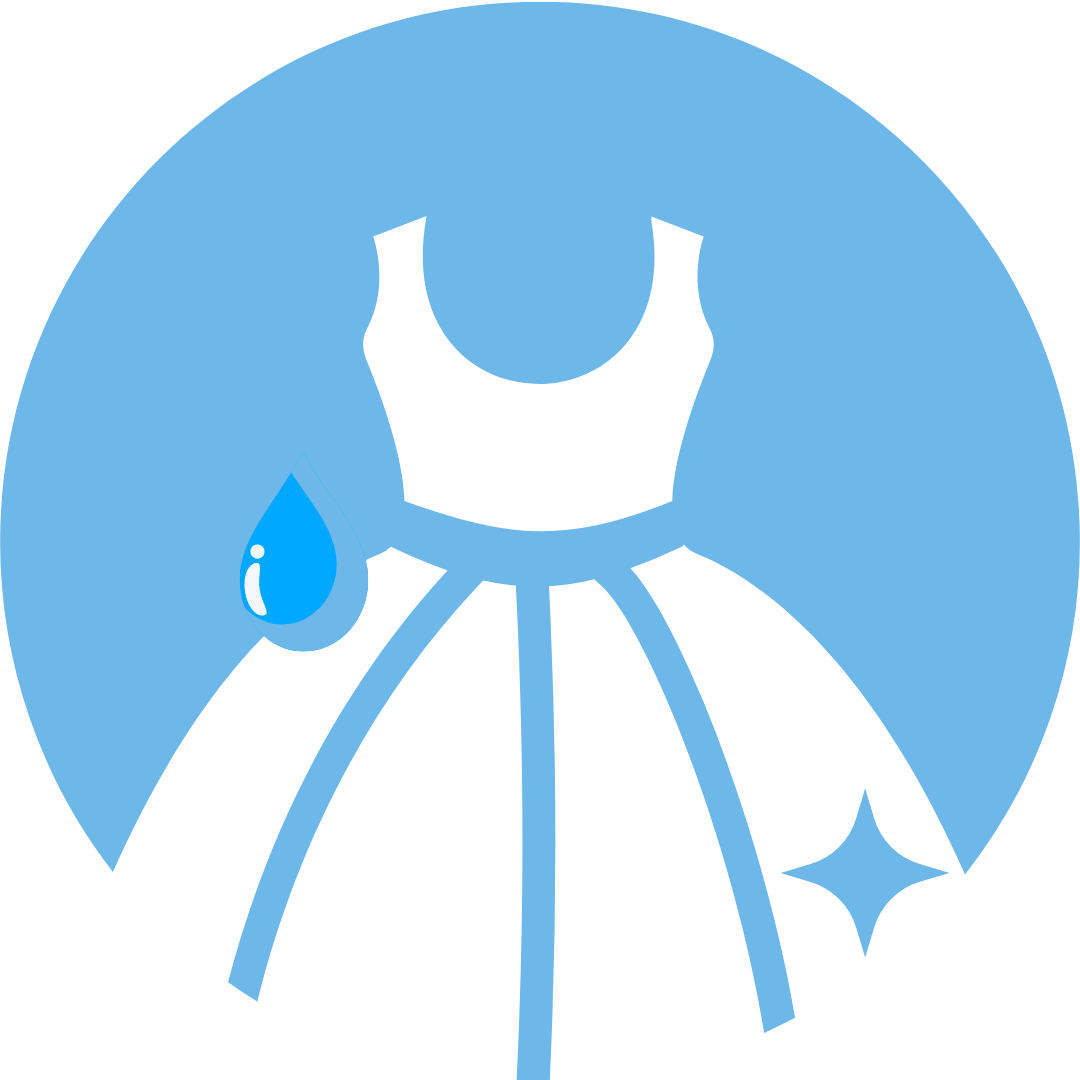Blog
Stain Removal in Professional Wedding Dress Cleaning

Stain Removal in Professional Wedding Dress Cleaning – Easy ways to get rid of the stains on your wedding dress
In Professional Wedding Dress Cleaning, Stain removal refers to the process of applying chemicals and correct mechanical action to remove stains. This process is done after conventional water washing and/ or dry cleaning. Some stains are easier to remove before washing and dry cleaning, and some stains can only be removed during or after washing and dry cleaning. The nature of the stain determines which cleaning agent and stain removal method should be used in professional wedding dress cleaning.
Page Shortcut:
- Art of Stain Removal
- 4 basic elements for effective and safe stain removal
- What is that thing on my dress? 5 Practical Ways to recognize and identify the stains for wedding dress cleaning!
- Main characteristics of common stains in Professional Wedding Dress Cleaning
- How did stains get on my Wedding Dress? Understand the attachment is important for Professional Wedding Dress Cleaning
- How strong is the stain attached on the wedding dress? Factors affecting the stain attachment strength
Art of Stain Removal
As a Professional Wedding Dress Cleaning Company, it is very important to accurately and quickly identify the stains. This is followed by adopting the correct stain removal method. Stain removal is a combination of operational skills, experience and professional knowledge. To sum up, a good Wedding Dress cleaner can remove stains without damaging the clothes.
The ultimate goal of Wedding Dress stain removal is to remove stains as much as possible in the shortest time and in the safest way. Not to take any unnecessarily risks.
4 basic elements for effective and safe stain removal
- The correct identification of clothing materials
- The correct identification of stains
- The chemical properties of stains
- The methods and steps for safe stain removal
What is that thing on my dress? 5 Practical Ways to recognize and identify the stains for wedding dress cleaning!
Of course, the easiest way to for Professional Wedding dress Cleaners to identify the stains is to ask the bride! Therefore, if you know what it is, tell us at the beginning! But if you are not sure, we have 5 ways to identify the stains:
1. Appearance
Certain substances such as mud spots, food, paint, etc. They attach and cover the Wedding Dress to form agglomerated stains. Certain substances such as oils, colored liquids, etc. are get into contact with the Wedding Dress and are quickly absorbed by the fabric to form absorbent stains. Some substances such as vegetable soup, etc. They have the above-mentioned common characteristics.
2. Colour
Many stains retain the original color of the material that forms the stain. For example, the color of chocolate is mostly Brown, the stains it forms are also brown. Color identification is a great way to find out the stain.
- Red stains:
Red ink, red ballpoint pen oil, lipstick, cosmetics, colored pens, red paint, red juice drinks, and blood stains (old blood stains are dark red) and other possible stains are mostly red.
- Green stains:
Most of the stains formed by grass, patina, greens, beer and beverages, and green colored pen ink are green.
- Blue stains:
The stains formed by blue ink, blue ballpoint pen, copy paper, cosmetics, etc. are mostly blue.
- Yellow-brown stains:
The stains formed by tea, beverages, coffee, fruits, medicine stains, urine stains, rust, mud spots, etc. are mostly yellowish brown.
- Gray-black stains:
The stains formed by shoe polish, paint, graphite, carbon ink, etc. are mostly grayish black.
3. Touch
Use your hand to touch. Feeling with careful observation. This helps the identification of stains.
- Feels Hard? particularly for sugar, honey, paint, nail polish.
- Feels Oily? Greasy stains
- Feels Brittle? Wax
- Turns white when scratched? Protein stains
- Decolorize when brushed? Lipstick stains
4 Smell
Generally speaking, all kinds of stains have some sort of smell. The smell might not be strong. The secret is to use a hair dryer to generate warm air onto the surface of the wedding dress. This can strength the smell. Some common stains can be identified, such as perfume, alcohol, beverages, sweat, vomit, etc.
5. Position
Position of the stained area on the wedding dress can usually give us some clues.
- The front chest and cuffs: usually food stains, beverage stains or oil stains.
- Collar, back or armpit areas: mostly sweat stains, makeup stains or perfume stains.
- Shoulder areas: often related to hair product stains
- Bottom of Wedding Dress: must be sand/ mud/ soil/ grass/ sea water stains
Main characteristics of common stains in Professional Wedding Dress Cleaning
1. Greasy Stains
Stains formed on wedding dresses such as vegetable oil, animal oil, and mineral oil are collectively referred to as Greasy Stains. Grease can penetrate along the fabric fibers of the wedding dress. This type of stain generally has no obvious boundaries, often in a crisscross pattern. As time goes by, grease can be oxidized by the action of microorganisms. Its color may change from light brown to dark brown. Fully oxidized grease is generally not easy to remove.
2. Protein Stains
Such stains are caused by animal fat or egg matter. Other examples include blood, sweat, milk, vomit, human excreta, meat etc. Milk or yogurt stains are mostly milky white. Meat or gravy is red to yellowish brown; urine stains are yellow to brown.
Protein stains are insoluble in water and they are acidic. Therefore, alkaline solution can remove this stain. High temperature, prolonged stain exposure can make Protein stains and fiber bond more firmly.
3. Ink Stains
Ink stains are mostly stains formed by various inks or dyes during the wedding. Since the ingredients of various inks can be different, the removal methods should also be different.
Most of the inks are pigment particles or dyes uniformly dispersed in the pen. Therefore, adding an appropriate amount of desiccant and water as needed to remove the stain. Penetration and volatilization of water and binders or the oxidation of air. It can dry and cleaned quickly. Although this kind of material also has relatively strong permeability to the fabric. Its wetting ability is not as good as grease. Therefore, the boundary of the ink stain is still more obvious.
4. Oil-Soluble Coloured stains
This type of stain contains grease. It also contains different pigments, such as ballpoint pen oil, paint and various cosmetic stains. Due to difference in nature, and the cleaning solution used is also varying.
Based on the chemical composition of the Oil-Soluble coloured stains, their macroscopic characteristics are also different. For example, heavier ball pen oil stains have a certain ability to penetrate the fabric. Paint stains become hard after drying. Nail polish often forms a hard crust that shines on wedding dresses.
5. Tannin Stains
Fruit juice, beer, coffee, tea, wine, chocolate and other beverage stains has a substance called Tannins. Tannins are difficult to remove when exposed to alkali or high temperatures. This type of stain is generally insoluble in water, but soluble in acid.
Never expose Tannin stains to high temperature or alkaline solutions, as this will increase the difficulty of stain removal. The color of tannin stains generally ranges from brownish yellow to dark brown, and the longer it stays on the wedding dress, the darker the color. This type of stain has a clear appearance, and the edge of the stain is darker in color.
6. Other Common Stains
Rust Stains, mildew stains, corrosion stains, burnt stains, and certain unknown stains that cannot be judged. There are a wide variety of these types of stains, their properties are different. When cleaning the wedding dress, the treatment agent used is different from the process of removing stains. This requires the expertise and experience from Professional Wedding Dress Cleaners.
7. Special Stains
In the process of DIY wedding dress cleaning, many brides improperly handle their valuable dresses. This results in many problems, such as color matching, cross-color, color pattern, color rendering, or incomplete water throwing during rinsing, resulting in washing residue and residue Stay in the wedding dress. Poor ironing skills also leaving marks on the dress.
In the wedding dress cleaning process, many issues are happening such as the selection of the cleaning method is wrong, or the force is not uniform enough, or the washing method is improper. It is very likely that there will be uneven color, hoarfrost, and other faults on the wedding dress fabric. These are not even the original stains of the wedding dress itself.
How did stains get on my Wedding Dress? Understand the attachment is important for Professional Wedding Dress Cleaning
Under the law of Physics, there is always an attraction force between any objects. Once the stain comes into contact with the wedding dress, there are certain binding force between the stain and the fabric. This causes the stain and the fabric to be stuck together. Overall speaking, there are 3 types of stain attachments:
1) Mechanical Attachment
Mechanical adsorption is the combination of stain and Wedding Dress. This attachment is mainly embodied as solid particle stain. It mainly refers to the dust particles floating in the air scattered in the holes of the fabric, the folds of the Wedding Dress, and the splicing tabs. The edges and the gap between the yarns and other places cannot be absorbed. This adhesion is related to the structure, density, thickness, surface treatment, dyeing and finishing of the Dress material.
For example, the surface of the wedding dress has obvious unevenness and therefore, stain particles are can easily be attached. The dense fabric is not easy to accumulate dust and stain, but it is also difficult to wash off the stain particles. This type of stain can be dealt with by mechanical methods such as the impact of water during the washing process and the friction between materials. The mechanical absorption of stain is destroyed, so that the stain will fall off the wedding dress and achieve the purpose of decontamination. However, this method has certain difficulties for stain particles below 1um.
Depending on the thickness, texture, and fiber properties of the wedding dress, the attachment force can also be different. During the washing process, various mechanical forces such as impact, friction, beating and rubbing will cause different degrees of stain shedding. Mechanical force is a relatively weak bond. The stain combined with this force is easy to remove. However, when the stain particles are very small or fine particles of solid stain, while mixed with greasy stain, can be very difficult to remove.
2) Physical Binding
The interaction force between physical binding molecules is the main cause of stains on Wedding Dresses. For example, body oil particles are attached to the fibers by intermolecular forces. They can easily penetrate the fibers. Stain particles are often electrically charged. That is why Physical binding is also known as Electrostatic gravitation.
Some granular stain particles often have a positive charge under certain conditions. Stain such as carbon black, lime, and rust. Due to the opposite chargeability, the negatively charged fibers exhibit strong electrostatic attraction to this type of stain.
When the stain comes in contact with a wedding dress fabric with opposite charges, the surplus between each other becomes stronger. This form is more obvious for chemical fibers. Chemical fiber fabrics often have a fixed charge due to friction. Therefore, it is easy to absorb stain with opposite charges. There are often traces of multivalent metal salts in the water, such as calcium and magnesium ions. The negatively charged fibers interact strongly with the positively charged stain through calcium and magnesium ions. The removal of this kind of stain from Wedding Dresses requires a certain amount of detergent.
Some stain particles may also be negatively charged. E.g., Calcium, magnesium, and iron in the water can form so-called multivalent cation bridges between the negatively charged fibers and the negatively charged stain particles, so that they can be adsorbed on the fibers together. Sometimes, multivalent cation bridges can be the main reason why fibers adhere to stain. The electrostatic bonding force is stronger than the mechanical bonding. Therefore, stain such as positively charged carbon black and rust adheres to the negatively charged fibers, and sometimes it is difficult to remove them in the second clean.
3) Chemical combination
The chemical combination of stain and wedding dress does not generate a new substance, but refers to the fatty acid, milk, protein and other suspended or dissolved liquids that penetrate the fiber. The stain and some of the fiber molecules are combined through certain chemical bonds, which is attached to the fabric, just like dyeing. This kind of stain is generally difficult to remove, and special chemicals must be used to destroy the strong chemical bonding.
For example, blood stains on the fabric can be decomposed and removed by protein enzymes. Iron rust stains can be made using the reducing properties of oxalic acid. It is converted into iron oxalate and removed.
The adhesion between stain and fabric fibers through a certain chemical bond (covalent bond, ionic bond, hydrogen bond) is called chemical adhesion. Stain molecules with polar structures, such as fatty acids, proteins, and soil, and active groups such as shuttle groups and acid amine groups contained in the fibers, can form a certain chemical bond, and attach to the fabric privately. The chemical effect is generally strong, so the stain and the fabric bond more firmly.
This type of stain is difficult to remove with normal washing methods, and special chemical treatment is required. For example, the use of protein enzymes to remove dried blood stains, the use of oxalic acid to turn iron rust into a water-soluble complex iron oxalate can be removed by breaking the chemical bond between them.
How strong is the stain attached on the wedding dress? Factors affecting the stain attachment strength
The adhesion strength of stain on the fabric is related to many factors such as the state of the stain, the material, the nature of the fabric and the external conditions.
The state of stain affects the strength of its attachment. Dry stain such as dust are not easy to penetrate the fiber. However, if the mechanical force to attach the stain to the fiber is large, the stain particles may penetrate deep inside the fiber.
In comparison, liquid stains are more likely to go deep inside the fiber due to its wet nature. The stain is more likely to get deep into the tiny gaps of the fibers, so it is more difficult to wash and decontaminate.
The material and nature of the wedding dress fabric also have a great influence on the attachment strength of stain. For example, Cotton fabric is bundled cellulose. There are abundant capillary pores, which swells in contact with water. Therefore, it has a strong adsorption power with various stain.
Take wool as another case study. Wool fiber has a layer of scales on the surface. It closely covers the surface of the wool fiber, which can prevent solid stain from penetrating into the fiber. However, the electric charge of the wool fiber belt is larger, and the intermolecular gravitational force is relatively larger. Therefore, it is easier to absorb oily liquid stain. The chemical fiber fabric has a tight molecular structure, a smooth surface, and is not easy to stain. However, chemical fiber fabrics have poor hygroscopicity and are prone to static electricity, which makes the fiber surface more charged. Therefore, stain with a certain kind of charge is often caused by electrostatic attraction, so that the stain is firmly adsorbed on the surface of the fiber.
Professional Wedding Dress Cleaning
SHOP NOW!

